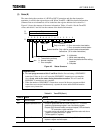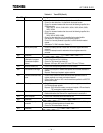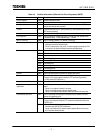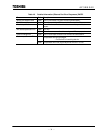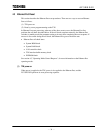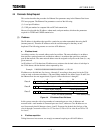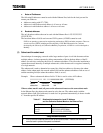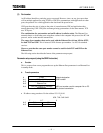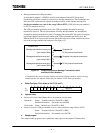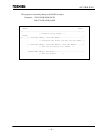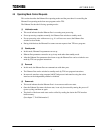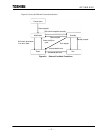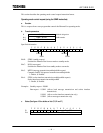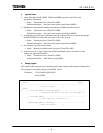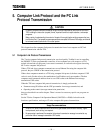
43
6 F 3 B 0 3 6 2
(3) Port number
An IP address identifies a particular port on a network. However, since, on any given port, there
will be multiple applications using TCP/IP or UDC/IP to communicate with applications on other
ports, the question of to which application the data should be passed arises.
UDP ports have the role of acting as the point of contact between UDP and applications that
transfer data using UDP. UDP ports are managed using port numbers. In the same manner, TCP
uses TCP ports.
The combination of a port number and an IP address is called a socket. The Ethernet Port
transmits data to or from other ports using these sockets in the computer link protocol, the PC link
protocol, and in socket interface transmission.
The range of port numbers that can be used with the Ethernet Port is from 1024 to 65535,
for both TCP and UDP. This is because UNIX allocates port numbers 1 to 1023 for standard
services.
However, note that the same port number cannot be used for both TCP and UDP on the
Ethernet Port.
The following section describes the format of the parameter setup request.
Parameter setup request (using the SEND instruction)
a. Function
This is a request from a user program that sets up the Ethernet Port parameters in an Ethernet Port
in standby mode.
b. Transfer parameters
A 3100H
Module designation
A+1 CMD = 0012H
CMD number
A+2
A+3
Local port IP address for the
Ethernet Port
A+4 UDP port number for message
transmission
• IP address setup procedure: For the address 133.113.90.10
↓
85H. 71H. 5AH. 0AH
F 8 7 0
A+2 71H 85H
A+3 0AH 5AH
UDP port number used for computer link or PC
link protocol transmission.



